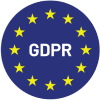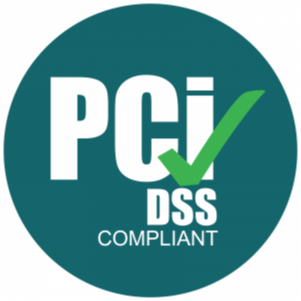Quick Summary
- Lay the groundwork by defining feedback goals that guide your enterprise’s software strategy.
- Look for enterprise feedback management features like omnichannel feedback, AI capabilities, and automated workflows.
- Align your goals with business objectives and prioritize essential features to evaluate potential software to support long-term success.
Customer feedback provides enterprises with insights to improve their products and meet market demand. However, the sheer volume of comments, ratings, and reviews collected across channels makes it challenging to analyze the information and reveal timely, actionable insights.
The good news is that robust, enterprise-grade customer experience software can help you transform raw data into a roadmap for improving loyalty, reducing churn, and strengthening customer relationships.
With so much at stake, deciding on which feedback tool to pick should be a strategic decision instead of a tactical reaction. So, what do you need to know to connect customer feedback to measurable business outcomes?
This guide explores how to choose the right customer feedback software for your enterprise. Read on to learn how to define your enterprise goals, identify the must-have features for effective enterprise feedback management, and evaluate software partners to support your long-term success.
Set the Foundation: Define Your Enterprise Feedback Goals
Before choosing feedback tools, clarify what you want to achieve with the input so that you can select a solution with the most appropriate features and capabilities.
For example, do you want to boost Net Promoter Score (NPS), improve Customer Satisfaction (CSAT), or lower Customer Effort Score (CES)? How does improving these key metrics translate into tangible business outcomes?
A well-defined feedback strategy starts with aligning data collection and enterprise feedback goals with specific, measurable strategic objectives. Here are some examples:
- Use feedback to map and optimize the customer journey, resolving friction points before they cause customer churn.
- Leverage customer input to guide product innovation, shape roadmaps, and uncover market opportunities.
- Analyze customer sentiment to proactively identify at-risk accounts and resolve issues, reducing churn and increasing customer lifetime value.
By setting specific goals and aligning them with your strategic objectives, you can turn customer experience software into a strategic component that drives meaningful growth.
Must-Have Features for Enterprise Customer Feedback Software
However, not all enterprise customer feedback softwares are created equal. What features should you look for?
Data Processing Capacity
Your platform must be able to handle enterprise-level complexity and scale, processing millions of data points from survey responses, feedback forms, social media comments, reviews, and ratings to generate real-time, actionable insights.
Enterprise-Grade Security
Collecting customer data means you must keep it safe to foster trust and protect your reputation. Your software must provide enterprise-grade security to help you safeguard user information and meet compliance requirements.
Omnichannel Feedback
Customers interact with brands via their preferred touchpoints. Therefore, your enterprise feedback management solution should support omnichannel feedback collection across email, SMS, web, mobile apps, social media, and more.
Seamless Integration
Your software should integrate seamlessly with your existing tech stack, particularly the customer relationship management (CRM) system, so real-time insights can flow directly into the tools your teams already use to maximize their impact.
AI-Powered Capabilities
Features like sentiment analysis and text analytics can help uncover themes and patterns within large volumes of unstructured data. Then, they can extract actionable insights and generate reports to inform timely decision-making.
Automated Workflows
Your solution should help you close the feedback loop with automated workflows, alerts, and case management functions. These features enable your team to address issues promptly, ensure nothing falls through the cracks, and deliver an exceptional customer experience.
How to Evaluate and Select the Right Customer Feedback Software Partner
Just like selecting any business partner, follow a well-defined framework to evaluate potential software providers. Your vendor should go beyond advanced technology to provide guidance and stability for sustainable customer experience success. Here’s what to look for:
- Ease of use. Even the most powerful platform won’t deliver results if your teams struggle to use it. Select a solution with intuitive dashboards, customizable reporting, and flexible workflows to drive team-wide adoption.
- Personalized demo or free trial. See the software in action and test its functionality within the context of your enterprise. Verify integration with your tech stack and validate that the platform can scale with your data volume and user base.
- Support and training resources. Ask the vendor about onboarding, integration support, customer success programs, and ongoing training resources to help your teams maximize the solution’s value.
- Third-party reviews. Research a vendor’s reputation and the software’s performance by consulting independent sources, like third-party sites and analyst reports. Look for reviews posted by enterprise users with similar requirements.
The Right Customer Feedback Software for Your Enterprise
An enterprise-grade feedback software is a strategic investment to set your organization up for success in a customer-centric market.
By defining clear goals, aligning them with your business objectives, prioritizing essential features, and partnering with a vendor that supports your long-term success, you turn the selection process into a deliberate pathway toward customer operational excellence.
SogoCore is designed to handle data at an enterprise scale. Our customer feedback analytics platform helps you consolidate input from multiple channels, analyze structured and unstructured data to extract actionable insights, and get your data when and where your teams need it to streamline workflows.
Talk with us to see how to turn customer feedback into actionable insights for meaningful growth.
FAQs
What is the difference between standard and enterprise feedback software?
Standard feedback tools often lack the scale, security, and integration capabilities required by large organizations. On the other hand, enterprise feedback management software can handle massive data volumes, support complex tech stacks, and provide advanced analytics and reporting to support strategic objectives.
How does customer feedback software integrate with a CRM system?
Customer feedback software typically integrates with a CRM system through APIs or prebuilt connectors to sync survey responses, sentiment data, and customer scores (e.g., NPS or CSAT) with individual records. The integration enables your team to view feedback alongside purchase history, support tickets, and account details, providing deeper contextual insights.
Why is closing the feedback loop important for an enterprise?
Collecting feedback is only the first step. You must acknowledge customer input, resolve issues, and follow up to demonstrate that you’ve heard and acted upon the feedback. Closing the loop builds trust, reduces churn, and transforms customer comments into a driver for loyalty and long-term growth.












